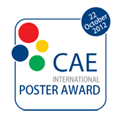
| |
EnginSoft - CAE Conference Abstracts
EnginSoft International Conference 2011 |
CFD Modelling of Regenerative Combustion System |
Stazi M. - Centro Sviluppo Materiali (Italy) |
Abstract |
The reduction of the fuel consumption by means of increase of thermal efficiency combined to the reduction of pollutants emissions are the main goals of the burner’s suppliers for reheating and treatment furnaces in the steelmaking industry. Moreover, the rising natural gas price suggests the steelmakers to re-use the by-products flue gas of primary steel-making processes (BFG, COG and other syngas) as fuels in the reheating furnaces. The intensive use of CFD allows the reduction of the time to market to develop burner prototype, supporting the burner design during the development phase and allowing the definiting the power scaling criteria for fulfillment of the burner series. CSM has developed and validated a CFD approach based on ANSYS Fluent that has been succesfully applied for the design of the Tenova Flexy-Tech™ flameless regenerative natural gas burners. Regenerative burners are characterized by cyclic operative conditions. To analize the evolution of the main field variables, a complete switch on cycle (30 sec) has been simultated of the IFRF test case for regenerative burner (IFRF test furnace equipped with a couple of 1MW NFK-HRS burners) for which time-dependent experimental data are available. The unsteady RANS simulation has enabled the estimation of the characteristic time needed to reach stationary condition in term of heat flux on the furnace walls and the analize low frequency flame ossilations. At the same time, the time-average thermo-fluid dynamic field, produced by the post-processing analysis of the unsteady simulation data, has resulted in good agreement with the field generated by the stationary simulation. This result confirms the possibility to use stationary CFD analysis to support the design of regenerative burner. To extent the CFD analysis to the simulation of syngas combustion and to increase accuracy prediction of pollutants emissions, the modelling approach has been updated based on Eddy Dissipation Concept (EDC) and detailed chemistry. The implementation of detailed chemical mechanism strongly increases the CPU time. In order to make possible the use of the updated CFD set up in the design cycle of new burners, the polyhedral mesh approach has been tested to reduce the simulation time. The paper describes the unsteady simulation results of the standard CFD approach and the validation process of the updated numerical simulation approach for the IFRF test case. |
Back to index |



